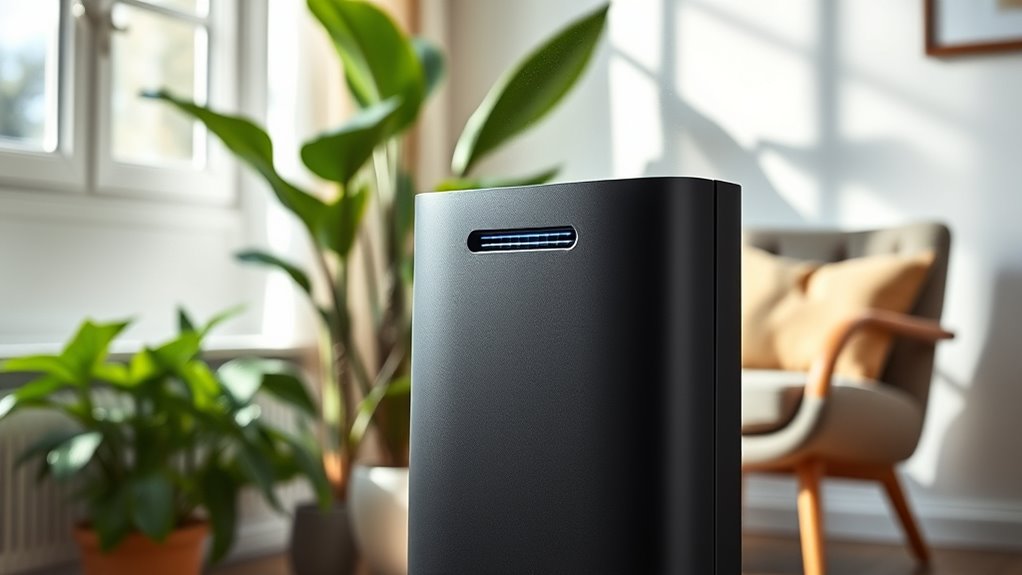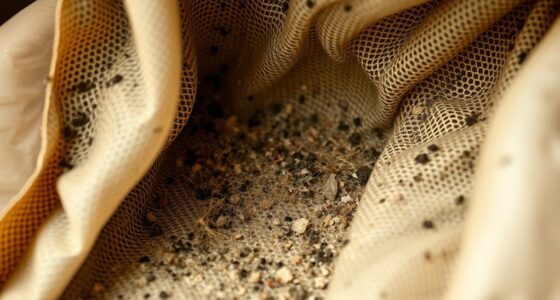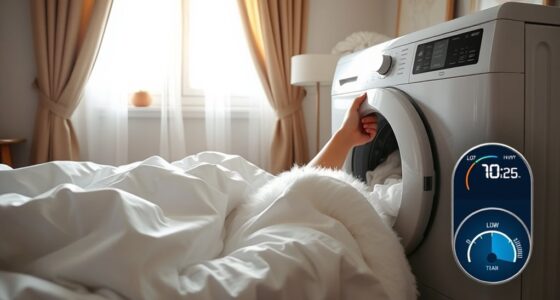Air purifiers really work by drawing in polluted air and trapping dust, pollen, pet dander, and odors with high-quality filters like HEPA and VOC filters. They can profoundly improve indoor air, especially for allergy or asthma sufferers. Proper maintenance and placement boost their effectiveness. Curious about which models are best or how they fit into your lifestyle? Keep exploring to discover how these devices can truly make a difference in your home.
Key Takeaways
- Air purifiers with HEPA filters effectively trap tiny particles like pollen, dust, and mold spores, improving indoor air quality.
- Proper maintenance and filter replacement are crucial for air purifiers to work efficiently.
- They significantly reduce allergens and pollutants, especially beneficial for allergy or asthma sufferers.
- Effectiveness varies based on room size, purifier quality, and usage habits.
- When chosen and maintained correctly, air purifiers are a worthwhile investment for cleaner, healthier indoor air.
How Do Air Purifiers Work?

Air purifiers work by drawing in contaminated air and passing it through filters that trap pollutants. To keep your device functioning effectively, regular air purifier maintenance is essential. This includes cleaning or replacing filters as recommended by the manufacturer. Proper maintenance ensures the purifier continues to remove allergens, dust, and smoke efficiently. Noise levels can vary between models, so if you prefer a quieter environment, look for units specifically designed for low noise operation. Some purifiers have sleep modes or quieter fans, making them ideal for bedrooms or offices. Keeping up with air purifier maintenance and choosing a model with acceptable noise levels will help you maximize its benefits while maintaining a peaceful space. Additionally, selecting a high-quality filter can significantly improve the purifier’s ability to remove tiny particles such as pollen and bacteria.
What Are the Main Types of Air Purifiers?
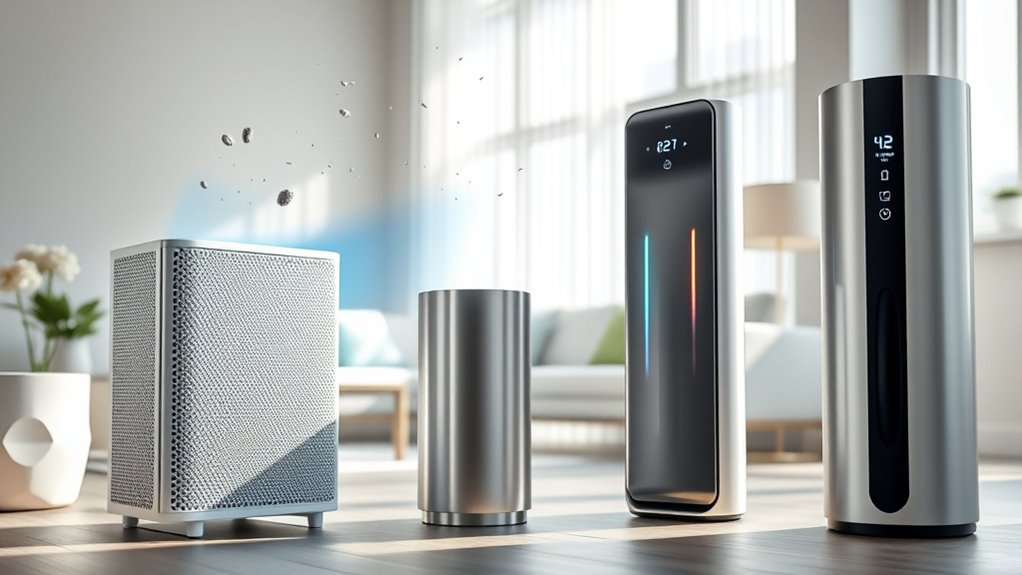
Have you ever wondered which type of air purifier best suits your needs? There are mainly two types: portable and built-in. Portable units are small, move easily, and require regular air purifier maintenance, like filter changes. Built-in purifiers are integrated into HVAC systems, offering continuous operation but often costing more upfront. Regular cleaning and proper placement are essential for maintaining their effectiveness air purifier maintenance.
Do They Effectively Remove Pollutants and Allergens?
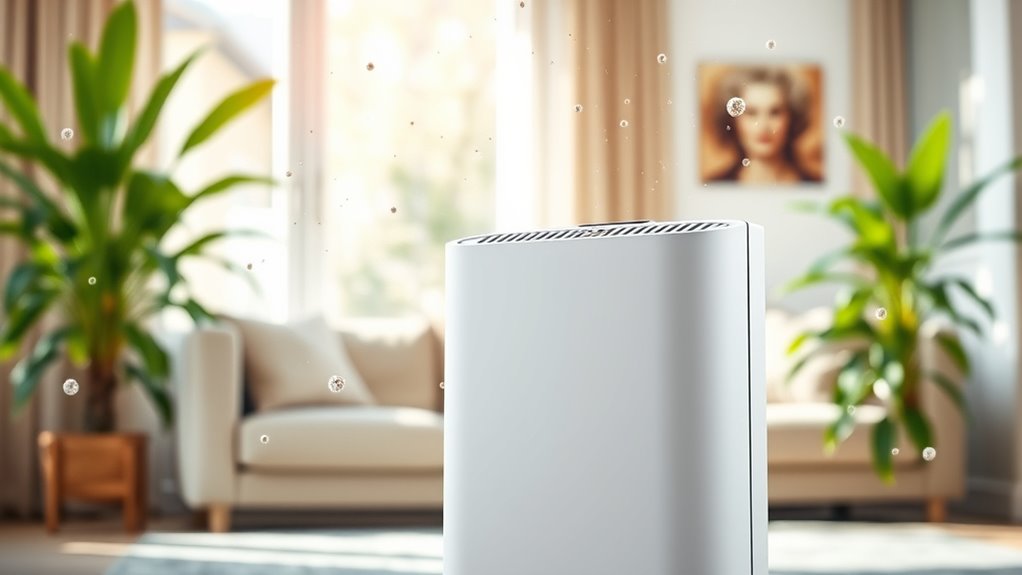
While not all air purifiers are equally effective, many models can considerably reduce pollutants and allergens in your environment. HEPA filters are key, capturing particles as small as 0.3 microns, including dust, pollen, pet dander, and mold spores. These filters markedly improve air quality for allergy sufferers. Additionally, some purifiers feature VOC removal capabilities, which help eliminate volatile organic compounds from household products, paints, and cleaning agents. This can reduce odors and harmful chemical exposure. Moreover, the effectiveness of an air purifier is also influenced by its filter quality and overall design, ensuring comprehensive purification. When choosing an air purifier, look for models with HEPA filters and VOC removal features to ensure you’re tackling a broad spectrum of indoor pollutants and allergens efficiently.
Factors That Influence Their Performance
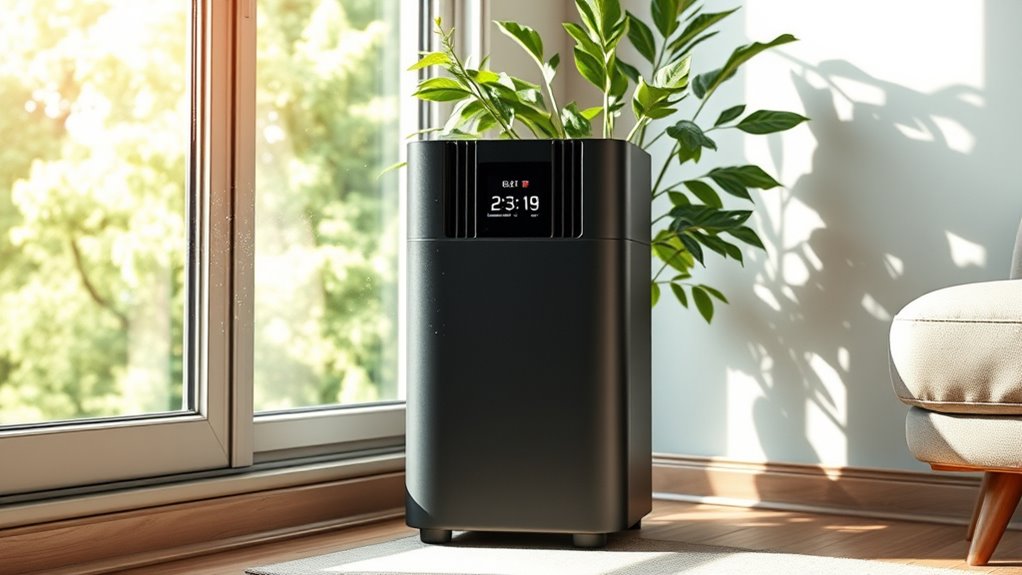
Several factors directly impact how well an air purifier performs in cleaning your indoor air. First, proper air purifier maintenance is essential; filters need regular replacement to keep the device working efficiently. Second, the size of the room influences performance—choose a model that matches your space. Third, the type of filter matters; HEPA filters typically remove more pollutants. Fourth, your usage habits, like running the purifier continuously or during high pollution periods, make a difference. Fifth, consumer reviews offer valuable insights, revealing real-world effectiveness and potential issues. Additionally, understanding indoor air quality and its sources can help you select the most suitable purifier for your needs. Keep in mind that neglecting maintenance or selecting an ill-suited unit can hinder performance. By considering these factors, you can guarantee your air purifier works at its best and truly improves your indoor air quality.
Are Air Purifiers a Worthwhile Investment?
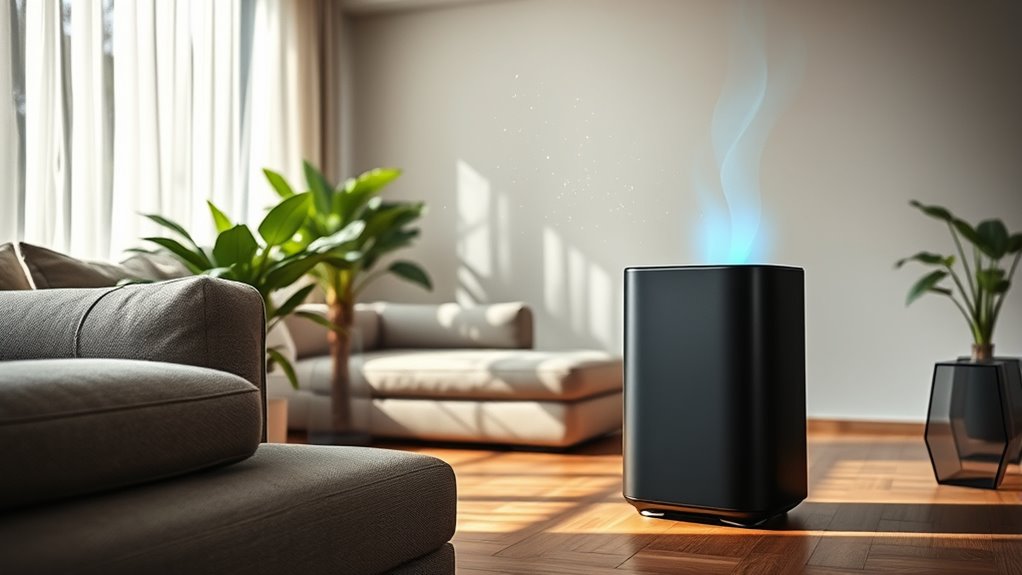
Are air purifiers a worthwhile investment? It depends on your needs and priorities. Conducting a cost-benefit analysis helps determine if the benefits outweigh the expense. If you suffer from allergies or asthma, an air purifier can markedly improve your indoor air quality, making it a valuable investment. However, aesthetic considerations matter—some models may clash with your decor, affecting your comfort. Here’s a quick comparison:
| Benefit | Consideration |
|---|---|
| Improved air quality | Cost of purchase and maintenance |
| Reduced allergy symptoms | Aesthetic impact |
| Better sleep quality | Noise levels |
| Long-term health gains | Size and design compatibility |
Weigh these factors to decide if an air purifier fits your lifestyle and budget. Additionally, understanding air quality standards can help you choose the most effective device for your needs.
Frequently Asked Questions
Can Air Purifiers Eliminate Viruses and Bacteria Effectively?
You might wonder if air purifiers can handle virus removal and bacterial elimination. While they considerably reduce airborne viruses and bacteria, they aren’t foolproof for complete sterilization. HEPA filters can trap tiny particles, including some viruses and bacteria, improving indoor air quality. However, for full protection, combine air purifiers with good hygiene practices and ventilation. They’re a helpful part of your health arsenal, but not a standalone solution.
How Often Should I Replace Filters in My Air Purifier?
You should check your air purifier’s filter maintenance and replacement frequency regularly, usually every 3 to 6 months. The exact time depends on usage and air quality; if you notice reduced airflow or persistent odors, it’s time to replace the filters sooner. Following the manufacturer’s guidelines guarantees peak performance, so stay consistent with your filter maintenance to keep your air purifier working effectively and breathe cleaner air every day.
Do Air Purifiers Produce Harmful Ozone or Emissions?
Imagine breathing in dangerous ozone emissions every time you turn on your air purifier—that’s the biggest myth! Most modern air purifiers emit little to no ozone, so chemical concerns are minimal. However, some models can produce small amounts of ozone, which may irritate your lungs if you’re sensitive. Always check the device’s specifications to confirm it’s ozone-safe, and you’re good to enjoy cleaner, safer air without worry.
Are Air Purifiers Noisy During Operation?
You might notice some noise during operation, but many air purifiers have low noise levels designed for quiet performance. The operational sounds vary depending on the model and fan speed, with higher settings producing more noticeable noise. If you prefer a quieter environment, look for purifiers labeled as “quiet” or “low noise.” Overall, modern units aim to balance effective purification with minimal disturbance, ensuring your comfort.
Can Air Purifiers Help Reduce Indoor Cooking Odors?
Imagine you’re back in the days of smoky taverns—kitchen odors and cooking fumes could linger for hours. Today, you can use an air purifier to combat those smells. Yes, they help reduce indoor cooking odors by filtering out airborne particles and odors. Keep the purifier running during and after cooking, and it’ll markedly improve your indoor air quality, making your kitchen a fresher, more pleasant space.
Conclusion
So, do air purifiers really work? The truth is, they can make a noticeable difference—especially if you pick the right type and consider factors like room size and filter quality. While they aren’t miracle solutions, they’re worth it for cleaner air and fewer allergens. Don’t just believe the hype; test one yourself and see how much fresher your space becomes. Sometimes, a simple device can truly transform your environment in surprising ways.
